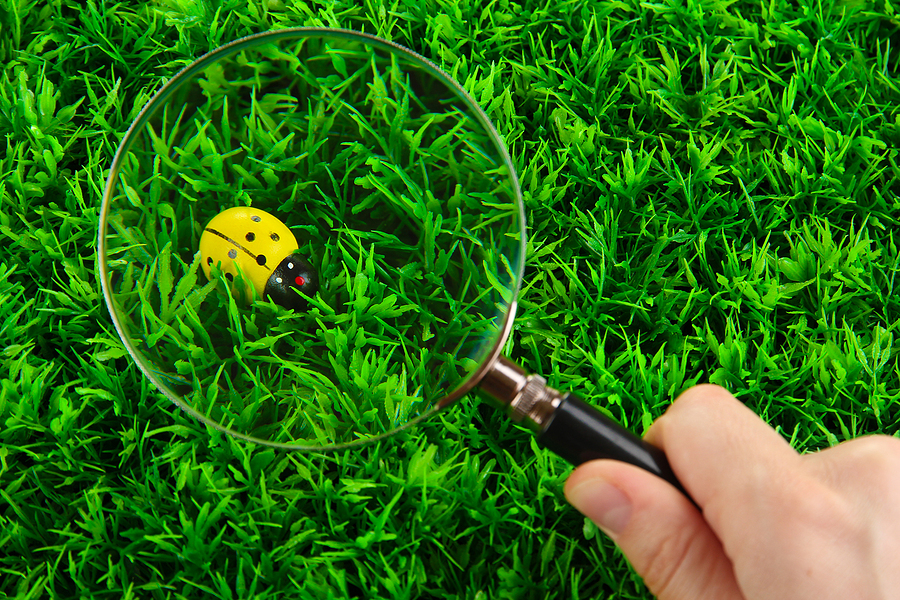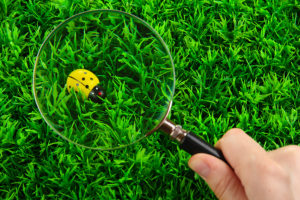
25 Jan Becoming an Insect Detective
 Golf course supers wear many hats–groundskeeper, teacher, financial advisor, staff manager, horticulturist, chemist, dead animal remover even. It’s a job that takes a wide skill set. One hat you may not realize you wear is detective. When it comes to turf and pest management success, it’s crucial for a super to be able to solve the crime of “What’s ruining my turf?” It requires regular grounds and pest monitoring, along with some sleuthing skills. So channel your inner Perry Mason and let’s figure out what creepy crawly is messing with your greens.
Golf course supers wear many hats–groundskeeper, teacher, financial advisor, staff manager, horticulturist, chemist, dead animal remover even. It’s a job that takes a wide skill set. One hat you may not realize you wear is detective. When it comes to turf and pest management success, it’s crucial for a super to be able to solve the crime of “What’s ruining my turf?” It requires regular grounds and pest monitoring, along with some sleuthing skills. So channel your inner Perry Mason and let’s figure out what creepy crawly is messing with your greens.
Step 1: Identify the Crime
To begin, you need to what is generally causing the damage. Is it insects or something else (like an animals, chemicals or traffic)? Start by considering the time of year: Most insect turf damage occurs in the growing season, so if it’s another time of year, then bugs aren’t your problem. Oftentimes, you just need to look down to see pests in the turf. Other times, it may require getting down on your hands and knees, and examining the roots and soil to see what’s going on. Some other clues include discoloring of the grass and turf that can be easily lifted. You’ll also want to consider the recent weather conditions and the moisture levels in the soil. Once you’re sure the damage is caused by insects—or if you’re not sure—move on to step 2.
Step 2: Investigation
Now it’s time to investigate the crime scene in order to discover the culprit. Make sure you’re up on your local insect knowledge–it’ll help narrow down your list of suspects. It will also be helpful to know where these insects generally like to hang out so you aren’t looking for a creeper that couldn’t possibly be in the location you’re examining.
When investigating the damaged area and looking for bugs, it helps if you generally watch and monitor the insects before jumping to conclusions. Some insects are harmless so you want to make sure you have indeed identified the criminal. Some ways to do this include:
- Just Look: Sometimes, you can easily get a visual just by looking at the grass itself. For example, ant mounds and caterpillars are super to easy to spot.
- Dig In: Using a small garden spade, dig up some of the soil and have a look. It may require you to look close at the roots on the underside of the turf. If you knock off some of the soil, you may see grubs or insects there.
- Flush Them Out: Another method is to add a tablespoon or two of lemon-scented dish cleanser to a gallon of water. Water the crime scene with this mixture. Apply a second helping 10 minutes later, and the suspect may reveal itself. Just make sure that a) it’s lemon-scented; bugs hate it!, b) that it’s not a hot summer day when you do this—the mixture could burn the turf, and c) douse the area with regular water afterwards to wash the soap away.
- Trap Them: Make the pests come to you using this method. Purchase either a pitfall or pheromone trap to lure them in. Pheromones use chemicals to attract insects to the trap, while pitfall traps literally just sit on the ground and any insects walking by will fall in.
- Additional Options: If you find you are still unable to unmask the criminal, some other options include salt flushing, black light attractors, net catching, floatation, and vacuuming.
Step 3: Taking Care of the Guilty
Once the troublemakers have been identified, it is time to come up with strategies to stop and repair the damage. It typically involves revisions to your courses’ herbicide and insecticide programs to target the problem area based on the culprit. You will also need to don your financial advisor hat to review the budget carefully–it may require some revisions if you have a particularly large problem.
Above everything else, the goal is healthy, high-quality turf so make sure to deal with these problems quickly so you can get back to growing good grass. Sometimes, this kind of situation may require additional help—like from Soil & Water Consulting. We have years of experience in disease recognition and analysis, and would be happy to help you develop a plan to strengthen your turf.


